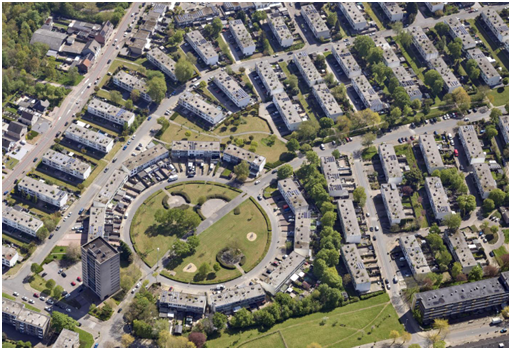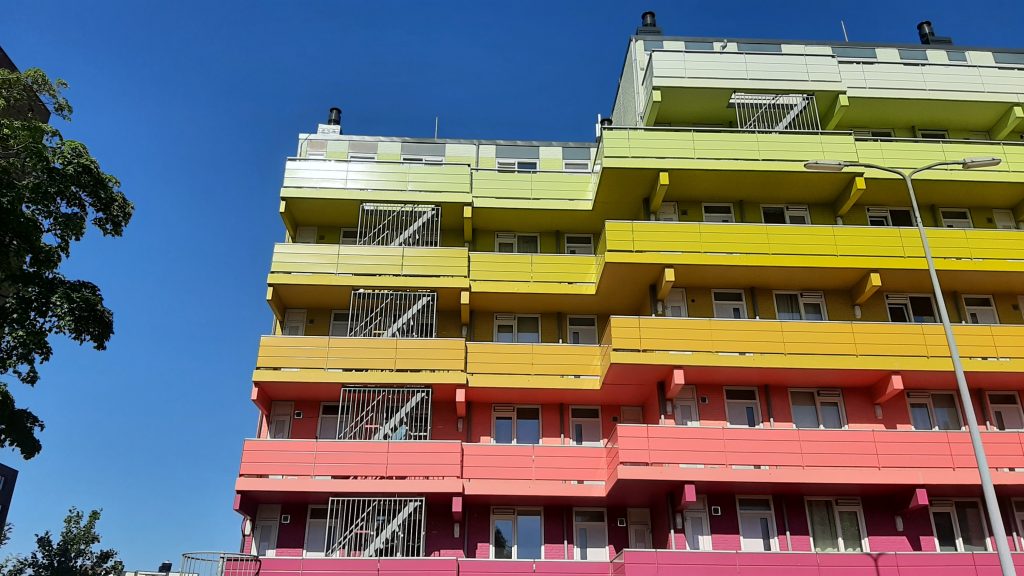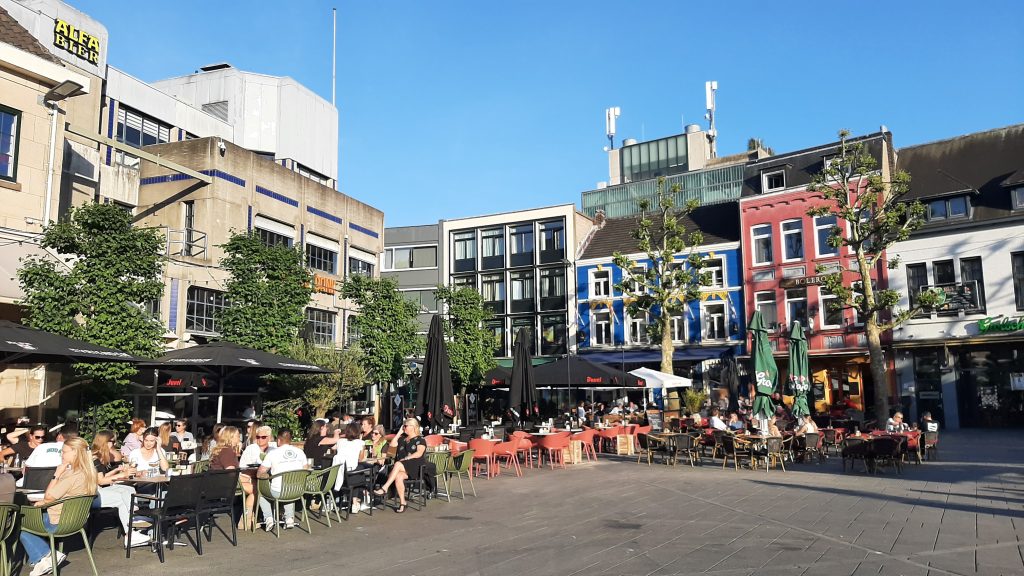By Marine Cornelis
“A new beginning emerged the moment the pilot was reconsidered,” reflected Guus van der Nat as we discussed Heerlen’s journey within the POWER UP project. His words captured the story of adaptation and growth behind the Dutch pilot. The municipality of Heerlen began as a pilot within the POWER UP project and evolved into an active observer, turning local challenges into valuable insights.
The municipality of Heerlen, a former mining town of 87,000 inhabitants, joined POWER UP with a clear and ambitious vision: to create a small-scale pilot that would make renewable energy accessible for people struggling with energy poverty. The project targeted housing blocks with six homes each, in a neighbourhood called Vrieheide. The idea was to combine rooftop photovoltaic systems with a cooperative business model involving residents via an energy cooperative, housing corporations and eventually also social workers. “We started five years ago to help people in energy poverty get a structure for cheaper energy bills,” Guus explained. “The business case was good, but we could not get everyone on board.”

At the time, the absence of a clear legal framework put many reguylatory and practical barriers to energy communities in the Netherlands. The new Dutch Energy Law, which will take effect in January 2026, did not yet exist. “It was not possible to start energy communities,” Guus said. “We tried to get permission to pilot before the law changed because we wanted to show lawmakers that this was a good solution for people in energy poverty.” In parallel, local partners were cautious. Housing corporations hesitated to share costs or take on repayment risks, and energy companies preferred to stay within the familiar boundaries of conventional business models. Moreover, most dwellings in the selected area were privately owned, making renovation unaffordable for many energy-poor residents. Heerlen reworked its model with the local working group to try to refine the governance, technical and financial details of the model, but failed.
When the team in Heerlen realised a proper pilot, with new renewables installations, could not happen, they still refused to give up. Heerlen chose to redirect its energy towards knowledge-sharing built on the work carried out in other POWER UP pilots. The already existing one-stop shop Woonwijzer Winkel has a specific programme for vulnerable households, offering energy audits and energy vouchers that can be spent at the one-stop-shop to improve the energy efficiency of the households. “Communication is the key,” Guus insisted. “Trust in the government is very low,” he explained. “You have to speak at the level of the people, not as an official, but as a neighbour.” In parallel and complimentary to POWER UP, advisors went door to door, explaining energy bills, discussing insulation and window replacement, and helping households access national support schemes that covered up to 70% of retrofit costs.

Very recently, Heerlen organised POWER UP national capacity-building workshops with Dutch stakeholders and other municipalities to sharpen awareness for combined energy poverty and energy community solutions. It also closely followed other POWER UP pilots, to be able to advance on their models later, based on the insights from the project.
The Heerlen experience also challenged a deeper narrative. In the Netherlands, energy poverty has long been treated as a social issue, separate from energy policy. Guus and his team argued that access to affordable and sustainable energy is a matter of agency and dignity. “People should not be dependent on others,” he said. “They should be able to provide for their own needs.” The proposed solar model would not only have been about producing energy; it was about restoring control and confidence to those who often feel they have neither.
For future activities focusing on sustainability and fighting energy poverty, a dedicated team has already begun preparing new, smaller pilots. In June, the first solar energy plant (Zonnecentrale de Droomboom) was completed. It builds directly on some of the lessons from POWER UP: the importance of aligning technical, social, and financial aspects from the very beginning, and of making communication an ongoing process rather than an afterthought.
Heerlen’s experience is a reminder that progress is rarely linear. Policy evolves more slowly than people, and the pilot that never took off still learned a lot from its difficulties: A successful energy community project requires
- strong cooperation between local actors
- awareness among citizens of benefits and opportunities, and
- a national legal framework that finally matches local ambition.

“Stopping was not a failure,” Guus repeated towards the end of our conversation. “It was the starting point.” In Heerlen, that statement feels entirely true. The groundwork has been laid. The trust is growing. And this time, the moment — and the law — are finally right.
Meet the Heerlen team at the Final Advocacy Conference on 27 November in Brussels!
